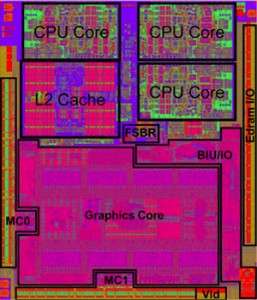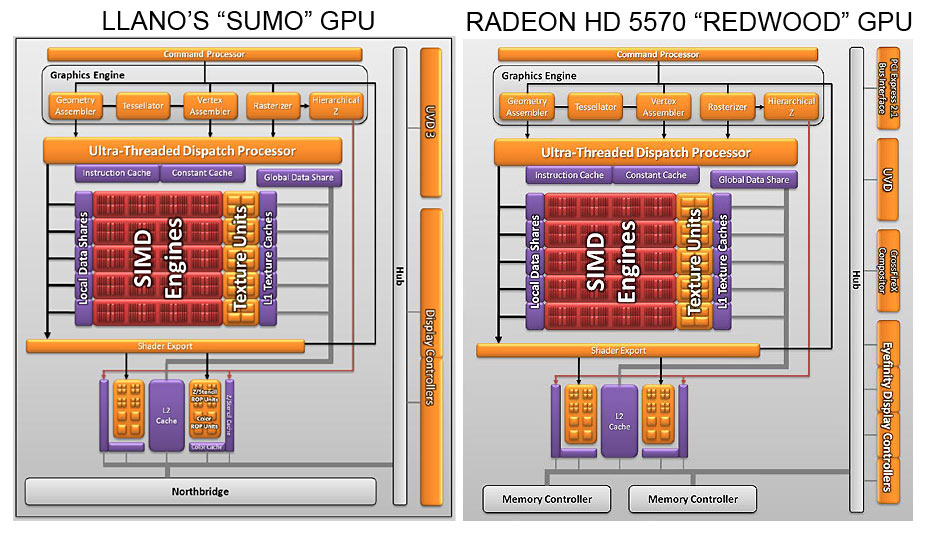1TFLOP was regarded as a point of pride for many of the posters in that thread. When the info from Epic came out saying that Unreal Engine 4 required at least 1TFLOP to shine, everyone was cool with that as the general sentiment at that time was the Wii U's GPU was about that powerful (4850).
Except to the more level-headed individuals, it was already pretty clear even back then that the Wii U wasn't going to be as powerful as so many thought. There were numerous
verified insiders who came and said as much.
arkam,
lherre and
Chopper all said that the system wasn't nearly as powerful as you guys thought.
But how did most the folks in WUST react to the news (not going to link to specific posts so as not ostracize anyone but this is all in the 2nd WUST):
and so on to the point that posters were downright flaming the guy...
Hell Donnie,
you yourself were pretty aggressive towards Arkam.
You can go ahead and claim that everyone was being all level-headed and that the gradual release of information about the system's power (through the performance of launch ports, die photo, etc.) are what allowed you to come to your current conclusion but that clearly isn't the case. It's the bias towards Nintendo in those threads that clouded these so-called expert's judgment and what prevented them from realizing that the Wii U isn't nearly as powerful as they thought. It was clear from the
very beginning.
I saw this last night, but blu beat me to mentioning how much revisionist history was going on in your posts here and in some of the other posts in this thread as well though I was trying not to address it. But this has got to stop.
First the only one throwing around this "expert" comment is you. What does that mean and what is that even based on? Is it based on who talked about the hardware the most? If that's the case then I'm a "PS4 expert" as well.
http://www.neogaf.com/forum/showthread.php?t=477540
http://www.neogaf.com/forum/misc.php?do=whoposted&t=477540
While we're at it I'm also apparently an Xbox fanboy.
http://forum.beyond3d.com/showpost.php?p=1708152&postcount=2382
But I have tried to talk about the Xbox in the past. In hindsight I probably should have left my opinion out of the OP.
http://www.neogaf.com/forum/showthread.php?t=460678
These links are also examples as to why I don't take console discussion as seriously as others might. I just want to talk about the hardware, but some want to take it way further than it should go.
The rest of what you are saying is just as absurd. The whole Wii U having a 1TFLOP GPU started well before the WUSTs even came to existence.
First was the initial talks of the GPU being an R700. Then we had IGN saying this:
http://www.ign.com/articles/2011/05/14/we-built-nintendos-project-cafe
IGN's sources originally informed us that Nintendo would be calling upon a custom triple core CPU, similar to what is being used in the Xbox 360, for their next system, as well as a graphics processor built upon AMD's R700 architecture. We called upon our trusted sources to help us determine the retail products with the closest possible clock speed and power, as well as fill in some of the blanks for other components, like finding a suitable motherboard and appropriate amount of RAM.
Our system comprises of the following:
CPU: 3.2GHz Triple Core AMD Athlon II X3 450
GPU: XFX Radeon HD 4850 GPU with 1GBs of VRAM
Motherboard: BIOSTAR A780L3L Micro ATX
RAM: 2GBs of Kingston DDR3
Power Supply: Rosewill RV350 ATX 1.3
Hard Drive: 80GB WD Caviar Blue 7200RPM
And then we had the badly Google translated article which it took about seven or eight months to get a proper translation.
http://translate.google.com/transla...s=org.mozilla:en-US:official&biw=1920&bih=872
By the way, say RADEON HD4000 system, a translation is to RADEON HD4890 to high-end RADEON HD4350 low-end, but because there was also information from a different system from the AMD processing performance that exceeds the 1TFLOPS, the middle is the spec basis rather than the RADEON HD4000 system of range class, it might be close to the RADEON HD4800 series of high-end system Possibly.
And from there was an article about the dev kits being underclocked.
http://www.gamesindustry.biz/articles/2011-06-16-wii-u-dev-kits-underclocked
And then lherre telling us about the dev kits overheating and how the GPU would stall because of that.
So similar to what blu says, once the WUST started some of us speculated on the idea of a GPU with 640 ALUs (me 640-800) with a lower clock and eventually also a possibly smaller process.
By the time that UE4 info came out that talk had been long gone. The only talk was that Wii U should be capable of running UE4 in a reduced capacity. That UE4 info came almost a year after the WUSTs started. As someone heavily involved in the Samaritan and UE4 talk I know what you're saying is wrong.
The whole "some people kept lowering their view on specs" isn't correct either. Here is the first speculated guess I posted.
http://www.neogaf.com/forum/showpost.php?p=30236063&postcount=5354
The only real change I made over the following year and a half was the clock speed, which in turn would lower the FLOPs metric. Other than that it was seeing the actual die shot. Making it sound like there were multiple changes down isn't correct either.
Also as blu already mentioned, it wasn't that people reacted to the new like that. They reacted to
the way Arkam presented his info. I bet all of those quotes were in response to Arkam. Lherre has already been sharing things for months by that point and he never once got that kind of reaction. And if we are going to talk about Arkam, then let's make sure to get the full picture of what he has said.
http://www.neogaf.com/forum/showpost.php?p=42010101&postcount=1420
Some yes. But the same problems are still present if you are porting a game over from the Xbox360. So if companies dont want to invest retooling games, you will get crappy(downgraded) ports.
That said,I am nothing but excited for the console and cant't wait to see the first round of games made from the ground up on the WiiU. That is when we will see what this little beast can do!
The bias thing is funny to me because at least for me it wouldn't have anything to do with Nintendo, but me being optimistic and always looking for the positives. One poster even pointed out my optimism.
Here I am being optimistic with PS4.
http://www.neogaf.com/forum/showpost.php?p=38658228&postcount=139
bgassassin said:
I agree. I think Sony is on track for a powerful console that won't break the bank this coming gen.
Here I am being optimistic about Xbone despite the info I had just passed along.
http://www.neogaf.com/forum/showpost.php?p=47835397&postcount=1522
Depressing would have been one of the last words I would have used. I think it's pretty powerful considering retail cost limits.
http://www.neogaf.com/forum/showpost.php?p=47838939&postcount=1559
Only if the focus is on a couple of points. For me personally those "negative" points are a non-issue so far.
So if anything I'm biased for all the consoles.
I don't know what it is you're even trying to achieve with these posts you are making. They're (old) opinions. Heck here was another opinion I made.
http://www.neogaf.com/forum/showpost.php?p=47540962&postcount=2039
IMO and based on a discussion I prompted on B3D at one time dealing with PS4 and Xbox 3, Nintendo seems to be going through having to put together new documentation and dev tools for their HD transition. And this is the biggest issue right now. Like one of the posters said at that time, you're only as good as your tools. It seems PS3 had the same trouble early on. We've seen quite a few cases of devs mentioning they had to learn things on their own with Wii U. I don't see it as intentional by Nintendo, but I do see it as frustrating because Nintendo already has enough going against them whether deserved or not and it can be considered reason to impact the possibility of future games again whether deserved or not.
http://www.neogaf.com/forum/showpost.php?p=47702193&postcount=537
Yeah like I said in that post I believe in my evaluation of Wii U's potential, but it's on Nintendo to show what Wii U is capable of. I won't go to technical, but to me it seems like Nintendo is having to get newer documentation and dev tools together because of their transition to HD and modern hardware development. So they're going through growing pains right now and hopefully they'll be able to provide devs with a better environment where they aren't having to figure out so much with Wii U on their own.
And what did we learn not even a day after that second post?
http://www.neogaf.com/forum/showpost.php?p=47712851&postcount=648
We benefited by not quite being there for launch - we got a lot of that support that wasn't there at day one... the tools, everything."
"Tools and software were the biggest challenges by a long way... the fallout of that has always been the biggest challenge here," Idries reaffirms. "[Wii U] is a good piece of hardware, it punches above its weight. For the power consumption it delivers in terms of raw wattage it's pretty incredible. Getting to that though, actually being able to use the tools from Nintendo to leverage that, was easily the hardest part."
I'm not going around saying "I told you so" because it's a freaking opinion. I got out of doing "I told you so" on opinions because to me it's like boasting about a coin toss landing like you called it. And likewise for trying to put someone down for the toss not going as they called it.
Anyway to get back on topic there was one thing I kept forgetting to mention that I wanted to pass along. That was other than the duplicates in the die shot the other half to the idea I had about a dual graphics engine, or maybe something like Cypress was that Flipper/Hollywood had three rasterizers.
http://www.segatech.com/gamecube/overview/
PLL: Phase Lock Loop
eFB: Embedded Frame Buffer
eTM: Embedded Texture Memory
TF: Texture Filter
TC: Texture Coordinate Generator
TEV: Texture Environment
RASx: Rasterizer
C/Z: Color/Z Calculator
PEC: Pixel Copy Engine
SU: Triangle Setup
CP: Command Processor
DSP: Audio DSP
XF: Triangle Transform Engine
NB: Northbridge - all system logic
including CPU interface, Video
Interface, Memory Controller, I/O
Interface
I probably need to reiterate that my view is just an opinion since if/when we learn that Wii U does not have a dual engine, some of you won't try to come back later and say that I claimed it would have one.




